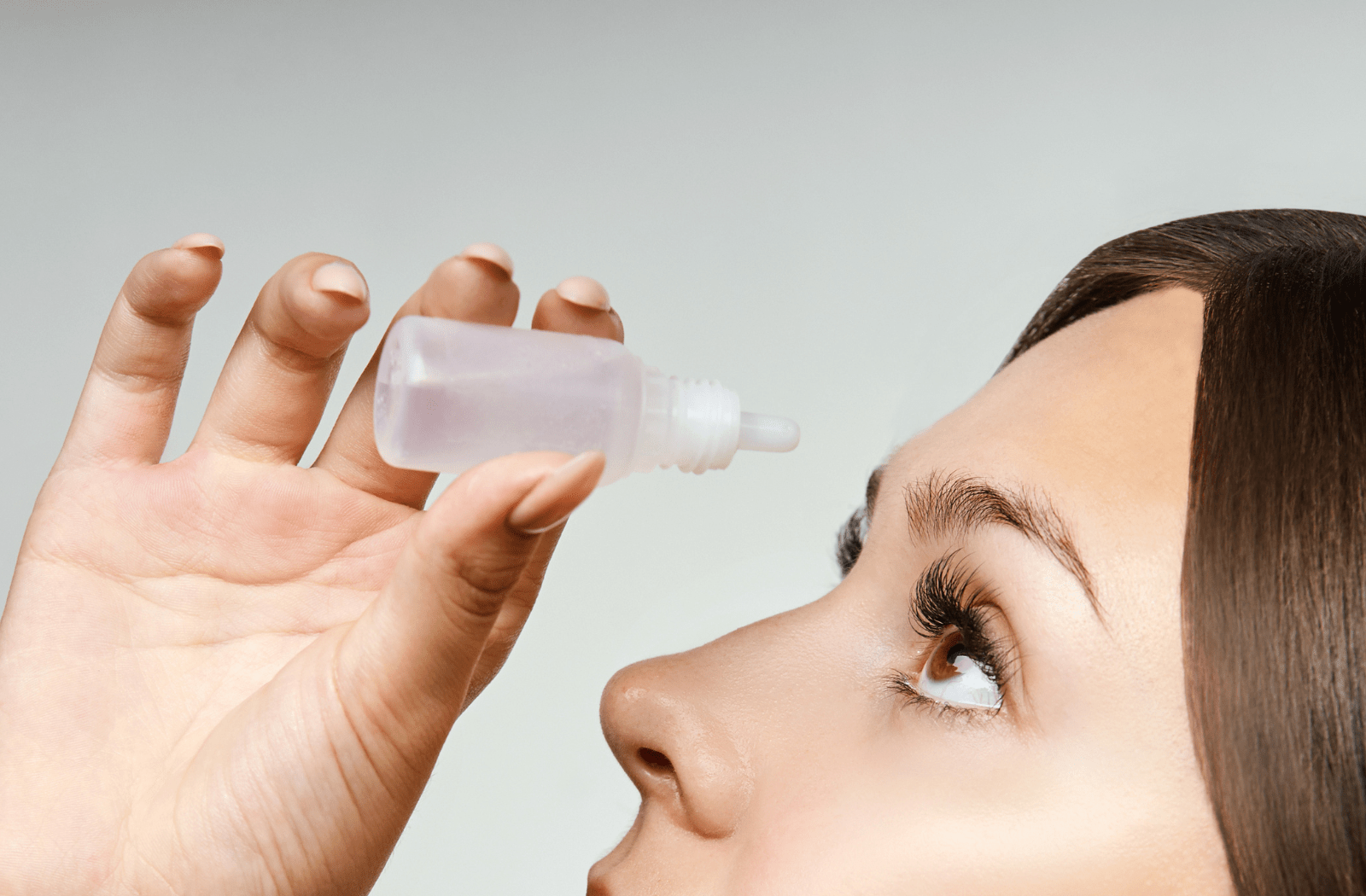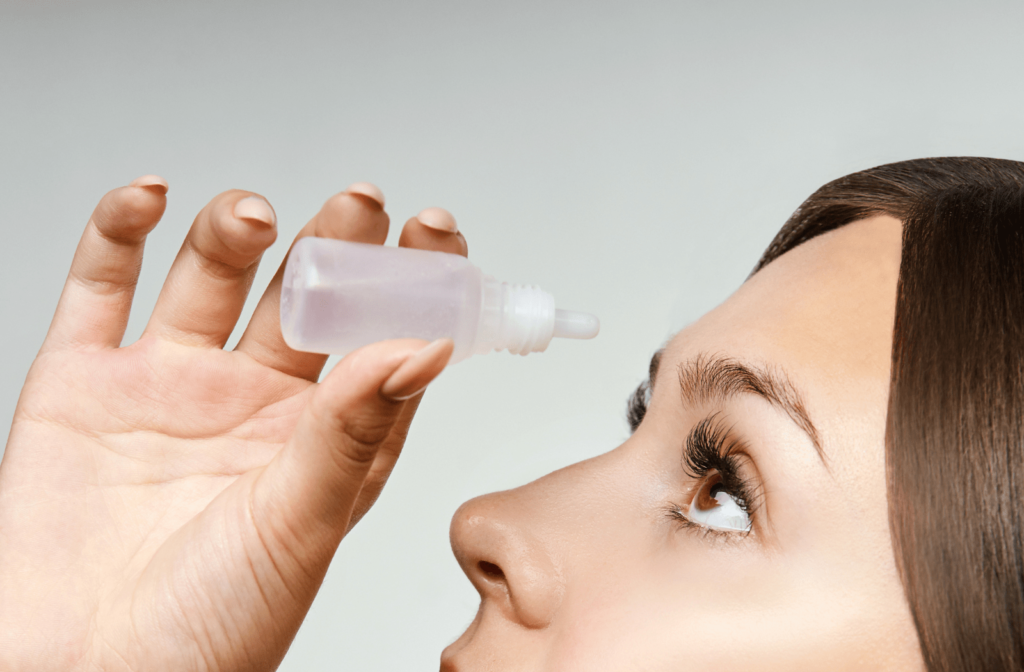Dry eye disease is not fun. If you constantly feel as if something is in your eye and have to fight the urge to rub your irritated eyes, you can understand the need for relief. Luckily there are options for you. First, you might want to book a comprehensive eye exam to find any underlying causes.
Artificial tears are used to bring moisture back into your dry and unhappy eyes, but there are a few different types depending on the underlying cause of your condition.
Let’s look at different types of dry eye disease so you can make an informed decision on which eye drops will work for you.
What is Dry Eye?
Dry eye disease happens when your tears are unable to sufficiently lubricate your eyes. It can be caused by several factors that disrupt the healthy tear film. Three layers make up the tear film: fatty oils, aqueous fluid, and mucus.
Normally, this combination keeps the surface of your eyes lubricated, smooth, and clear. Dry eyes can be caused by issues with any of these layers.
This tear film disruption causes inflammation and damage to the eye’s surface. Your eyes may sting, burn, or itch. Other symptoms of dry eye disease include:
- Eye redness
- A feeling that something is in your eyes
- Eye strain or blurred vision
- Stringy mucus in or around your eyes
- Light sensitivity
3 Types of Dry Eye Disease
Lack of Water
When there’s a lack of the water component in your tears, you have an aqueous deficiency dry eye (ADDE). The water component of your tears can’t be produced because the water glands (lacrimal glands) that produce them are not functioning properly.
When the lacrimal glands produce less aqueous output, there is an aqueous deficit. Tears lubricate and protect your ocular surface, and if there aren’t enough, each blink may cause more pain. The friction against your sensitive eyes is incredibly uncomfortable.
People with autoimmune diseases like Sjogren’s syndrome frequently experience aqueous deficiency dry eye.
Lack of Oil
The meibomian glands along the edge of your eyelids may clog, which prevents enough oil from being secreted with your tears. Your tears will evaporate and dry out very quickly if there isn’t enough oil in them, which is what we call evaporative dry eye (EDE).
The most common symptom of EDE is uncomfortable or inflamed eyes. Other symptoms you may experience include:
- Eyes are stinging or burning
- Eye fatigue, especially after using a computer, phone, or reading for an extended period
- The feeling that something is in your eyes
- Difficulty wearing contacts
- Crusting in the eyes and puffy, reddened eyelids
Lack of Both
Mixed dry eye (MDE) is when you have both a lack of water and a lack of oil in your tear film.
Causes
To understand how to treat your dry eye, you have to understand what is causing it. There are many causes of tear film dysfunction, including:
- Ageing
- Hormonal changes
- Autoimmune disorders
- Inflamed glands in the eyelids
- Allergic eye conditions.
- Certain medications
- Vitamin A deficiency
- Blepharitis
Sometimes the causes are more simple, air conditioning, windy conditions and staring at devices for a long time can also reduce the moisture in your eyes and lead to dry eye.
Luckily there are many treatment options you can do to bring some moisture back into your eyes, including artificial tears.
Artificial Tears for Dry Eye Management
Artificial tears are eye drops that are used to moisturize your eyes’ outer surface and lubricate dry eyes. These eye drops can be used to treat dry eyes that are brought on by ageing, medications, hormone changes, eye surgery, or external factors like windy or smoky environments.
Artificial tears can be purchased over-the-counter, but to find the best eye drops for your dry eye symptoms, you should talk to your eye doctor first.
Additionally, there are eye drops that also promote healing of your eyes and reduce tear evaporation, and those with thickening agents so your eyes stay lubricated and happy even longer. Types of eye drops include:
Tear-Changing
If your dry eye disease is brought on by poor tear quality, these eye drops can help by altering the chemical composition of your tears.
Eye Coating
Eye coating eye drops give your eyes more moisture. They could be the solution for you if you suffer from evaporative dry eye.
Oil Stabilizing
If you experience evaporative dry eye as a result of insufficient oil production, you should use oil-stabilizing artificial tears.
Preservative Eye Drops
This kind of artificial tears frequently come in multidose bottles and contains preservatives that prevent bacteria from growing. If you have moderate or severe dry eyes, the preservatives may irritate your eyes.
Preservative-Free Eye Drops
This type is typically suggested if you use artificial tears more than four times per day or if you have moderate to severe dry eyes because it contains fewer additives.
Call Your Optometrist in Winnipeg
Book your appointment today with View Pointe Vision + Style to discuss the underlying causes of your dry eye so we can find the best treatment method for you!


